Miscellaneous agents
| Home | | Medicinal Chemistry |Chapter: Medicinal Chemistry : Antifungal Agents
Antifungal Agents : 1. Naftifine (Nabtin) 2. Ciclopirox 3. Tolnaftate 4. Terbinafine - Synthesis and Drug Profile
Antifungal Agents - Synthesis
and Drug Profile
Miscellaneous agents
1. Naftifine (Nabtin)
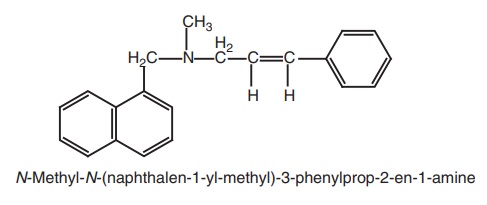
Synthesis
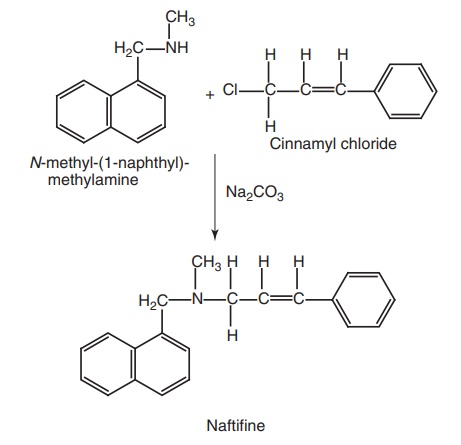
Mode of action: The drug has fungicidal activity against Tinea cruris and Corporis spp. This inhibits squalene 2,3-epoxidase and thus,
inhibits fungal biosynthesis of ergosterol.
Dose: It is administered as 1% cream twice daily.
2. Ciclopirox
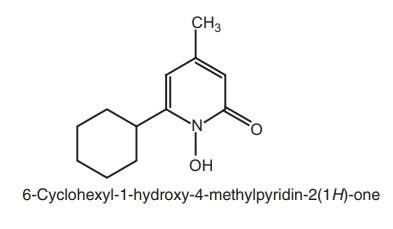
Synthesis
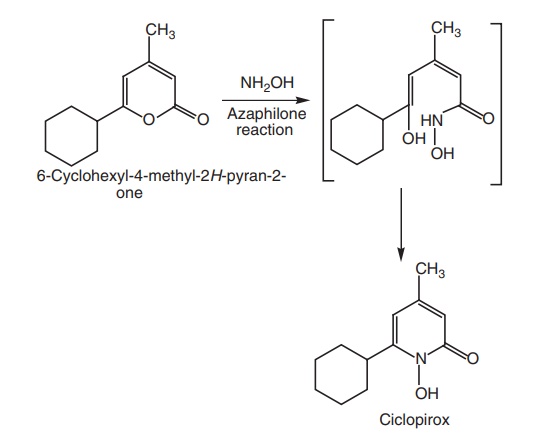
Properties and uses: Ciclopirox is a white or yellowish-white
crystalline powder, slightly soluble in water, soluble in ethanol and in
methylene chloride. It is available as 1% cream on cotton for the treatment of
cutaneous candidiasis and for Tinea
corporis, T. cruris, T. pedis, and Pityriasis versicolour.
Assay: Dissolve the sample in methanol, add water, and titrate with 0.1
M sodium hydroxide. Determine the end point potentiometrically.
3. Tolnaftate
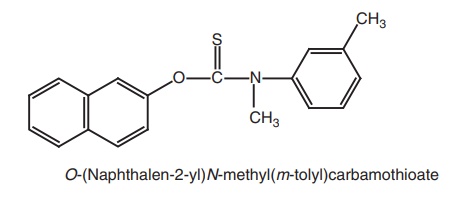
Synthesis
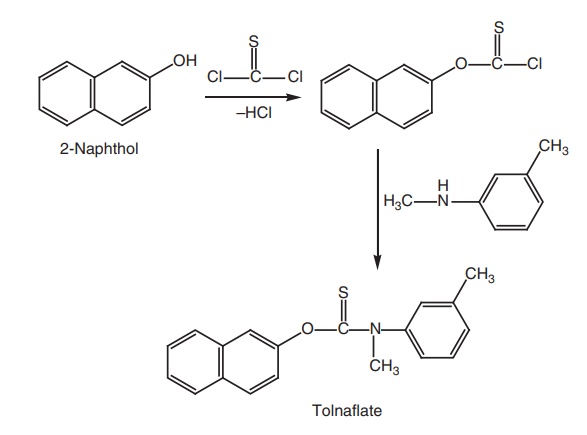
Properties and uses: Tolnaftate is a white or yellowish-white powder
practically insoluble in water, soluble in acetone and in methylene chloride,
and very slightly soluble in alcohol. It is effective for the treatment of most
cutaneous mycoses, such as Trichophyton
rubrum and Microsporum canis.
Replacement of the aromatic methyl group by hydroxy or methoxy or its removal
does not affect potency. Replacement of the complete tolyl group by a α-napthyl
or a β-napthyl substituent does not decrease its potency. It is nontoxic.
Dose: The administered dose is 1% as a cream, gel, powder, aerosol
powder, and topical solution, applied locally twice a day.
Assay: Dissolve the sample in methanol, measure the absorbance, after
its dilution with methanol, at the maxima at 257 nm, using ultraviolet
spectrophotometer.
4. Terbinafine
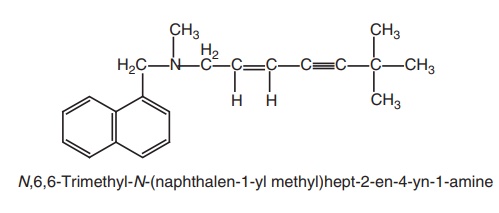
Synthesis
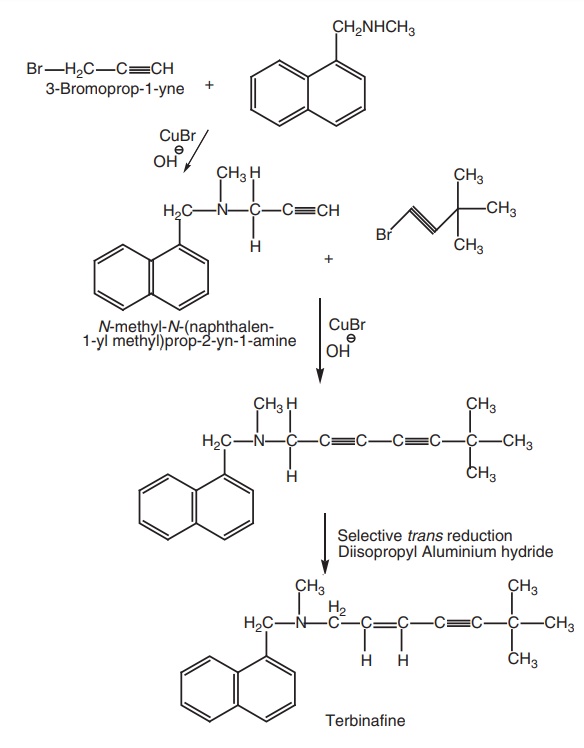
Mode of action: The uses and mechanism of action of terbinafine
are the same as those of naffine. It is active by virtue of its ability to block
squalene epoxidase.
Metabolism: Several CYP450 enzymes, including CYP1A2, CYP2C19,
CYP2C9, CYP2C8, CYP3A4, and CYP2B6,
extensively metabolize it.
Properties and uses: Terbinafine hydrochloride is a white powder,
slightly soluble in water and in acetone, soluble in anhydrous ethanol and in
methanol. It is used as an antifungal agent.
Assay: Dissolve the sample in ethanol, add 0.01 M hydrochloric acid,
and titrate with 0.1 M sodium hydroxide. Determine the end point
potentiometrically.
